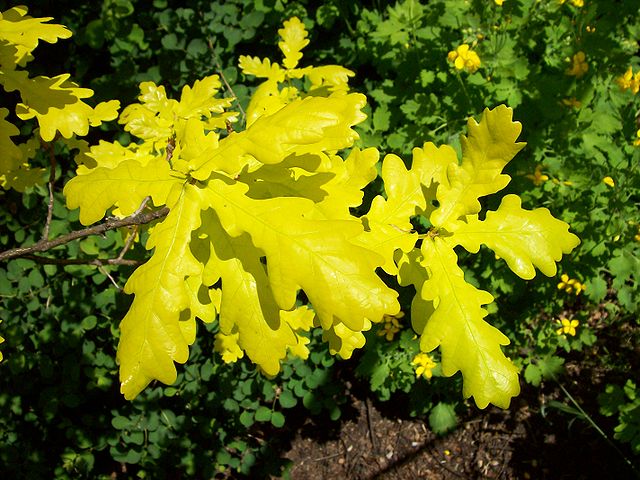I used to hate yellow. This is perhaps the consequence of a traumatism during my childhood. There must have been a fashion at my parents’ generation that consisted in painting a room or one’s entire house in yellow, preferably in a canary bird shade, from the carpeting to the kitchen cupboards. Moreover, my discussions with other gardeners confirmed this initial judgment: yellow is deemed shocking, difficult to integrate in plantings.
I radically changed my mind under the guidance of Louis Benech who opened my eyes on the many possibilities of this color. I believe one of the best way to use it is in total look, in a garden made only of yellow flowers: a garden of the sun, a golden garden… This idea is far from being new. Gertrude Jekyll already recommended it in her celebrated book Color scheme for the flower garden. The reason of this success is simple. It is difficult to combine different shades of pink, certain of them tend more towards blue, other towards red. On the contrary any combination of yellow looks great. Yellow flowers are also ideally combined with white and black ones, for a hint of contrast. Furthermore, the choice of flowers is immense and one can easily find a lot adapted to the condition of any garden. The shiest can also opt for primrose shade of yellow, like the one of Cephalaria alpina.
Lesser known, yellow can also be found on many foliage plants. This can be a yellow variegation on the leaf, like in Hedera helix ‘Buttercup’ or Ilex x altaclerensis ‘Golden King’. In other plants, this is the whole leaf that takes a shade of yellow. The intensity of the color depends on sun exposure. A full sun position produces a more intense hue whereas in shade the color tends more towards chartreus. Be careful though, certain yellow foliage scorches in full sun. It is thus better to avoid the sunniest spot. The list of plants is large; I will only cite a couple of examples. There are trees like Gleditsia triacanthos ‘Sunburst’, Tilia x europaea ‘Wratislaviensis’, Quercus robur ‘Concordia’ and Fagus sylvatica ‘Aurea Pendula’, shrubs like Philadelphus coronarius ‘Aureus’ et Sambucus racemosa ‘Sutherland Gold’ or perennials like Humulus lupulus ‘Aureus’, Carex brunnea ‘Jenneke’ and Campanula garganica ‘Dickson’s Gold’. These plants are easy to recognize; their name usually contains gold or aurea. Combined together, they have the faculty to enlighten the shadiest corner of the garden or a courtyard. They are more original than the ubiquitous mix of deep green foliage and white flowers planted in these spots. Moreover, unlike silver foliage that looks gloomy in bad weather, golden foliage always looks fresh and gay.
One can also think of more ambitious combinations, which are more of an acquired taste I must admit. Think for example of the combination of golden foliage with bright pink and red flowers. Prince Charles himself has used this color scheme at Highgrove. He took his inspiration from Tibetan fabrics. This can also be found in certain plants already, like Weigelia florida ‘Rubidor’, Dicentra spectabilis ‘Gold Heart’ or Fuchsia ‘Genii’. Nature remains a main source of inspiration when it comes to color schemes.


Recent Comments